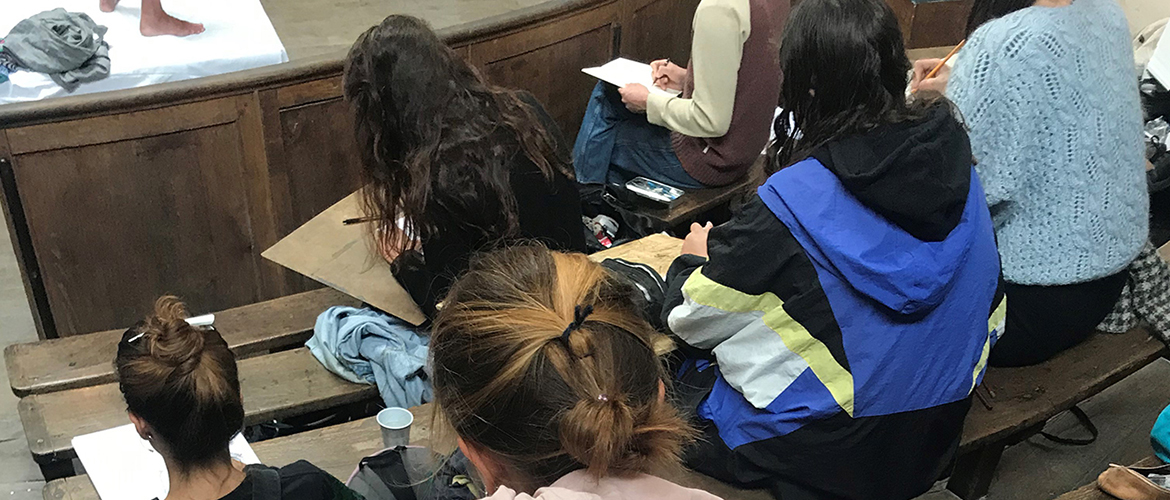Studios
The Department of Artistic Practice comprises thirty-four studios under the responsibility of artist-teachers. The studio is a place for artistic practice, creation and experimentation. It is also a space for debate, exchange and criticism. At certain times of the year, particularly during graduation or assessment periods, it is transformed into an exhibition space.
Under the guidance of a renowned artist, the studio is a privileged training space where students of all levels, from 1st to 5th year, work together, often using multidisciplinary creative techniques. Combining individual attention with a collective dimension of exchange, the teaching in the studio aims to encourage the artistic commitment of each student, helping them to gradually build their own personal artistic language.
Technical courses
The technical courses offer extensive training in working with traditional or modern materials, with a wide exposure to digital tools. Led by artists or art technicians, the technical workshops enable students to open up the field of their personal work and to envisage its development through the mastery of different media, to break down the material barriers to their creations.
They also provide complementary technical support for the work carried out in the practical arts workshop.
From the second semester of the 2nd year, students take technical courses, which they choose according to their artistic practice. The technical courses are taught in the printing/publishing department, the materials/space department and the technical foundations department
Drawing
Drawing is considered to be a cross-disciplinary aspect of studio practice. At once a record of what has been seen, a tool for analysis and reflection, a blueprint or project, it plays a major role in the conception of a work, but can also be considered as a work in itself. This course is compulsory in Years 1 and 2.
History of Art
The art history courses are designed to support students from Year 1 to Year 3, through cycles of lessons that enable them to acquire a number of fundamentals that will enable them to navigate art history with confidence. The aim is not, however, to follow courses organised academically according to periods or trends, but to give students the means to interpret art from all periods and all origins.
Research seminars in the 4th year and diploma seminars in the 5th year allow students to delve deeper into specific subjects.
Diagonales
The Diagonales structure the theoretical teaching of the first three years of the programme. They are based on the conviction that artists are nourished in the present by issues that go beyond the field of art alone. Whether they be political, economic, scientific or societal, these issues provide artists with the opportunity to sharpen their curiosity, hone their critical faculties and nurture their practice.
There are six Diagonales: Philosophy, Science, Film, Archival Studies, Technology and Metamorphoses.
1st cycle
The 1st cycle of three years of study aims to help students master the fundamental theoretical and technical tools relating to artistic creation and to help them identify a personal project. It leads to the undergraduate degree.
2nd cycle
The two-year 2nd cycle postgraduate programme is devoted to the preparation of the Diplôme national supérieur d’arts plastiques (DNSAP), equivalent to a master's degree, awarded at the end of the fifth year of study. A professional internship or study trip abroad is a fundamental part of the course. During these two years, students take their theoretical training further, in particular in the context of research leading to a dissertation and viva.



